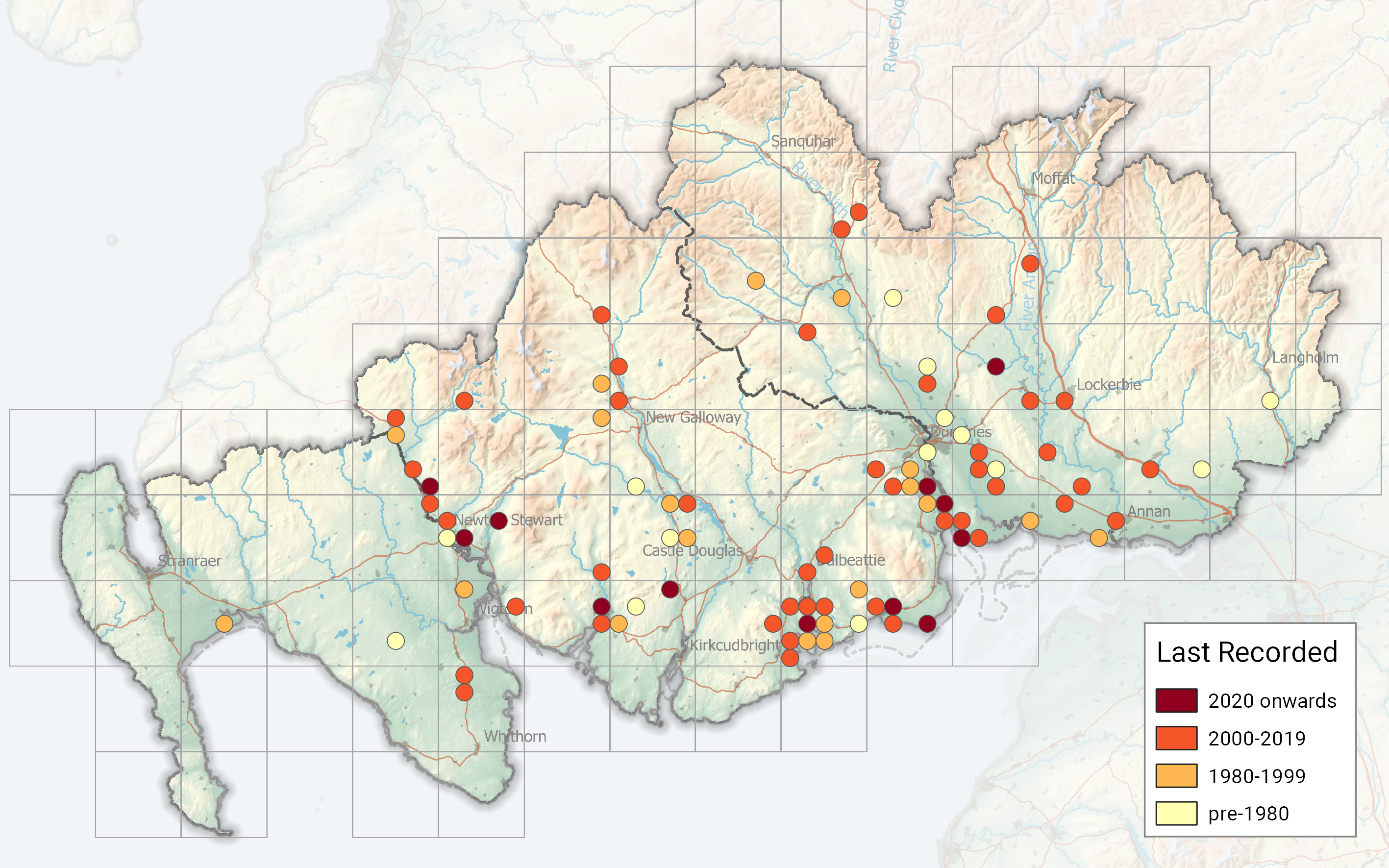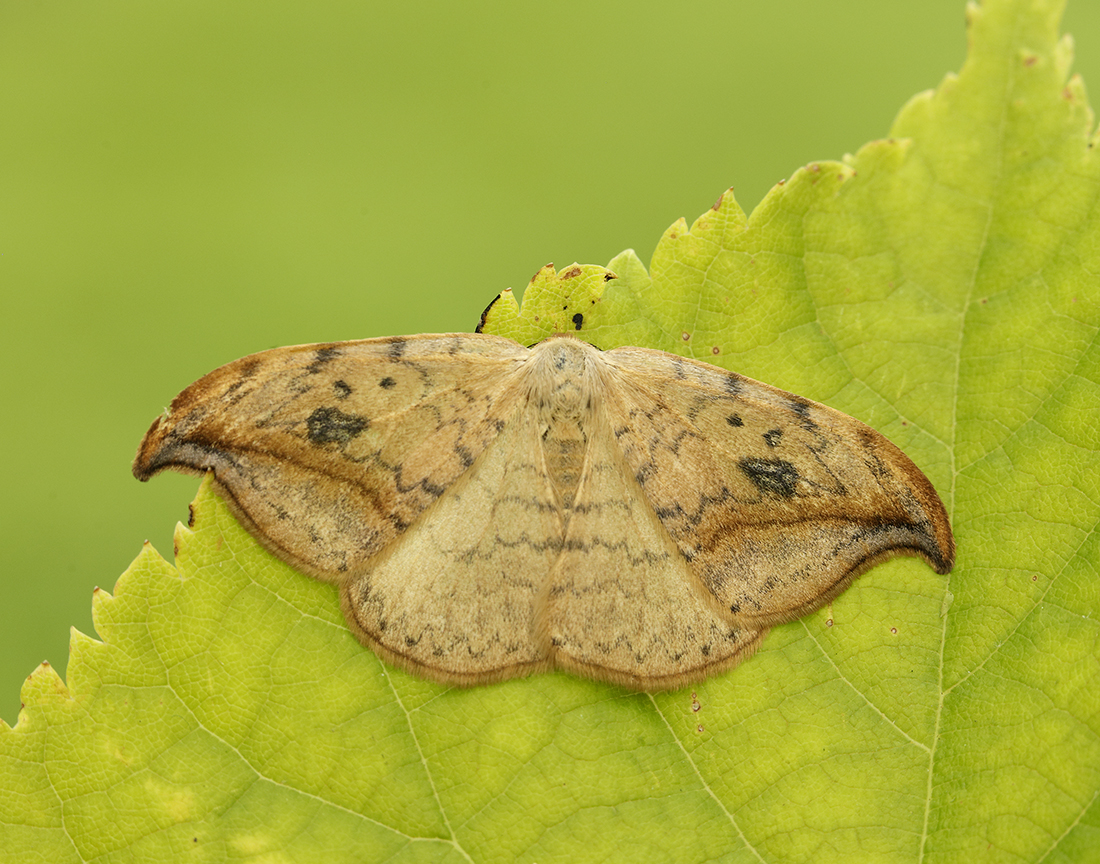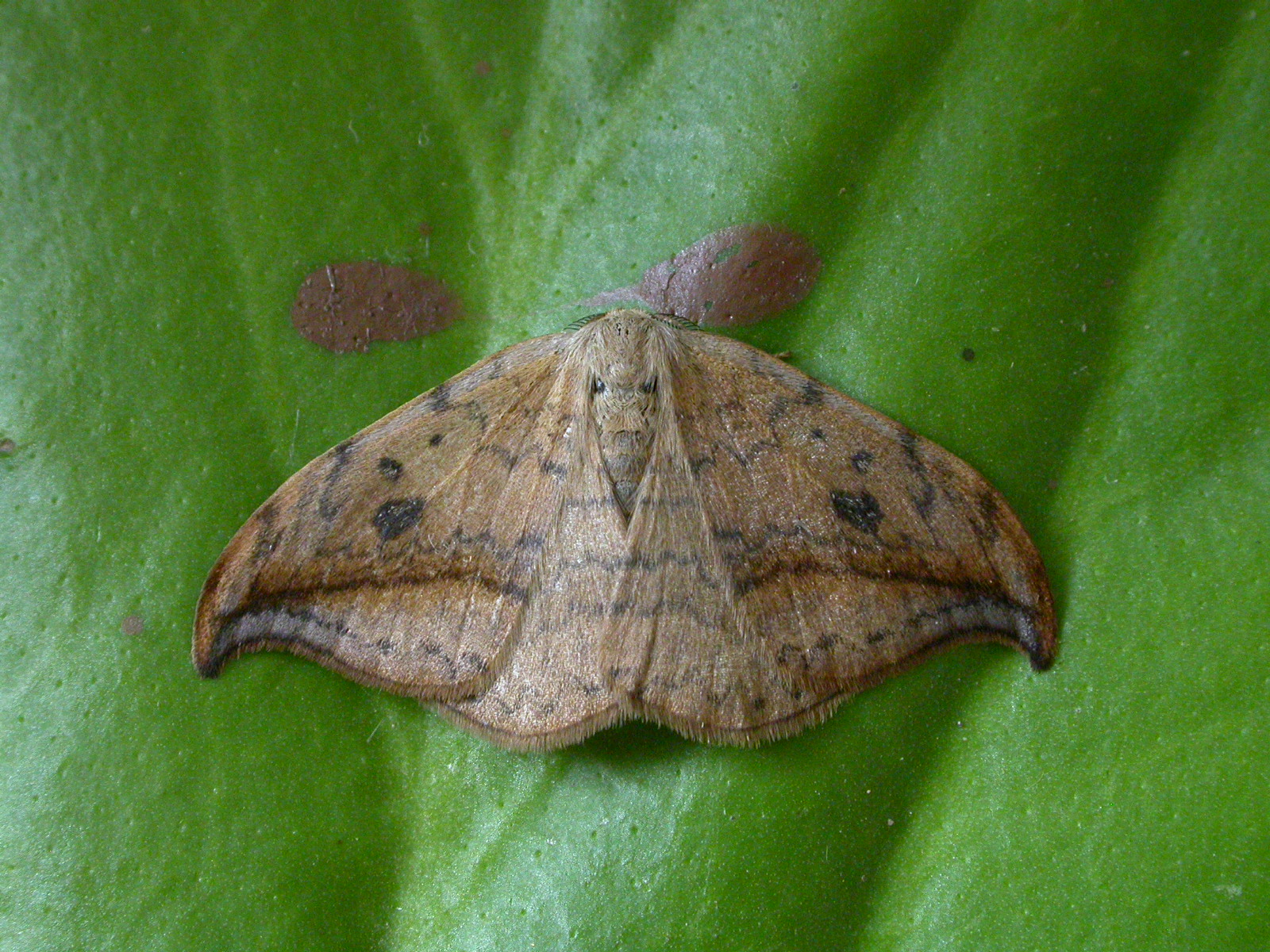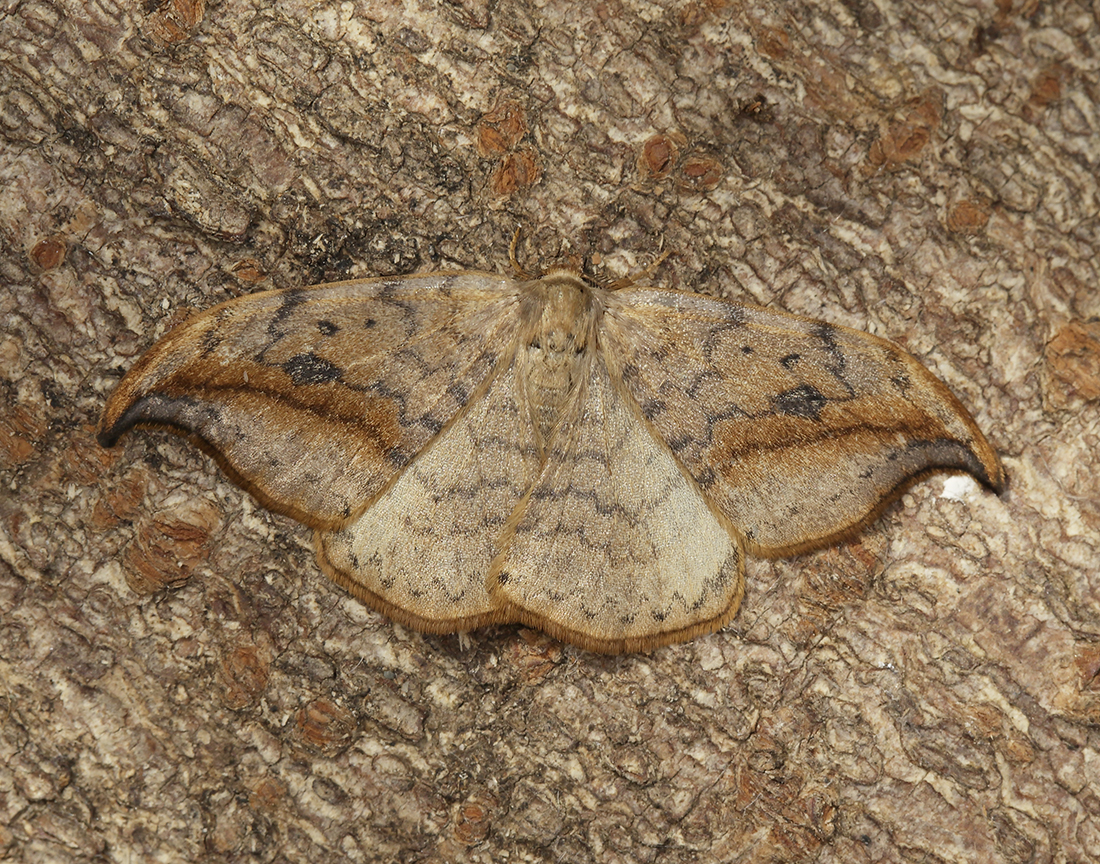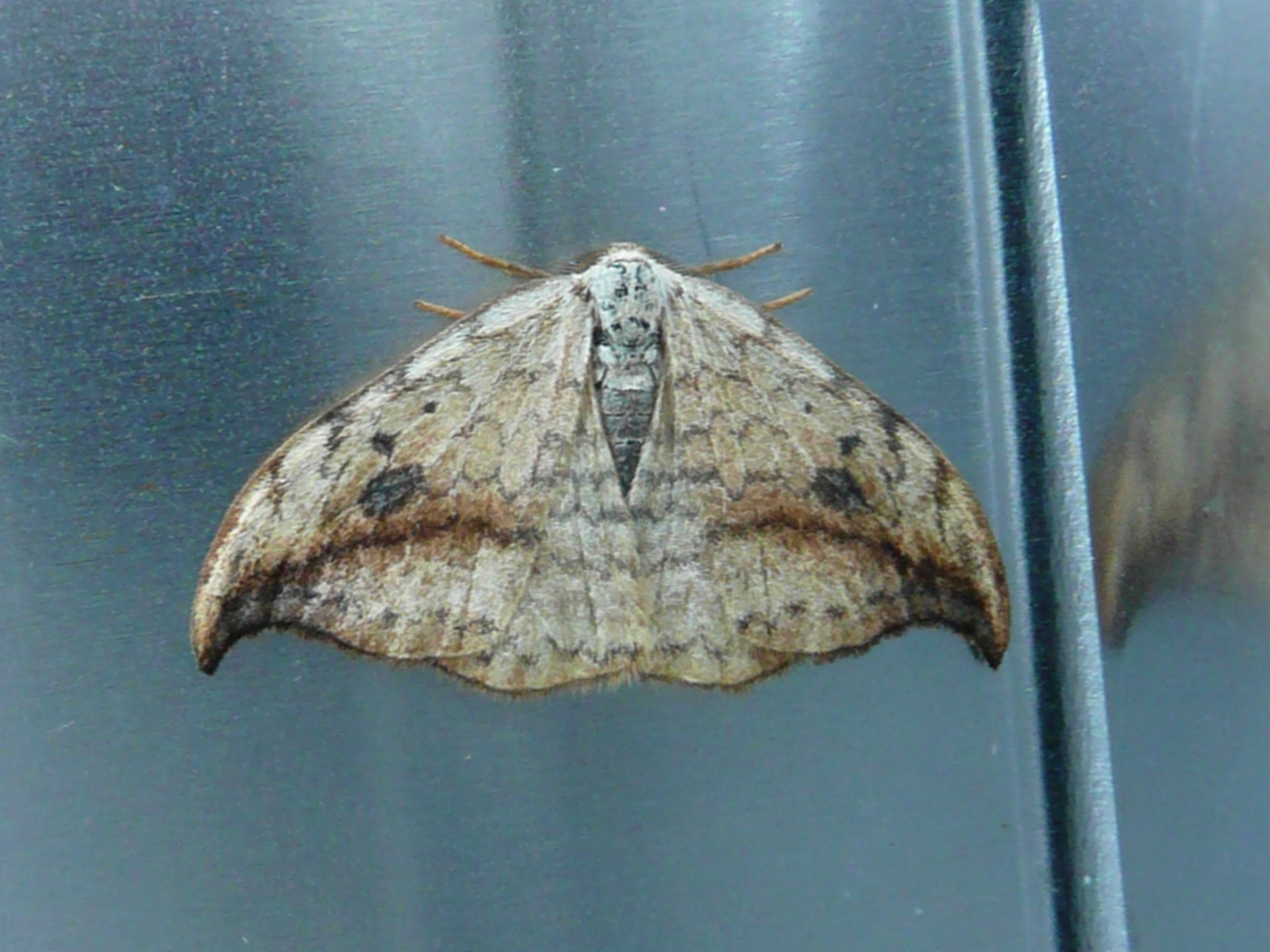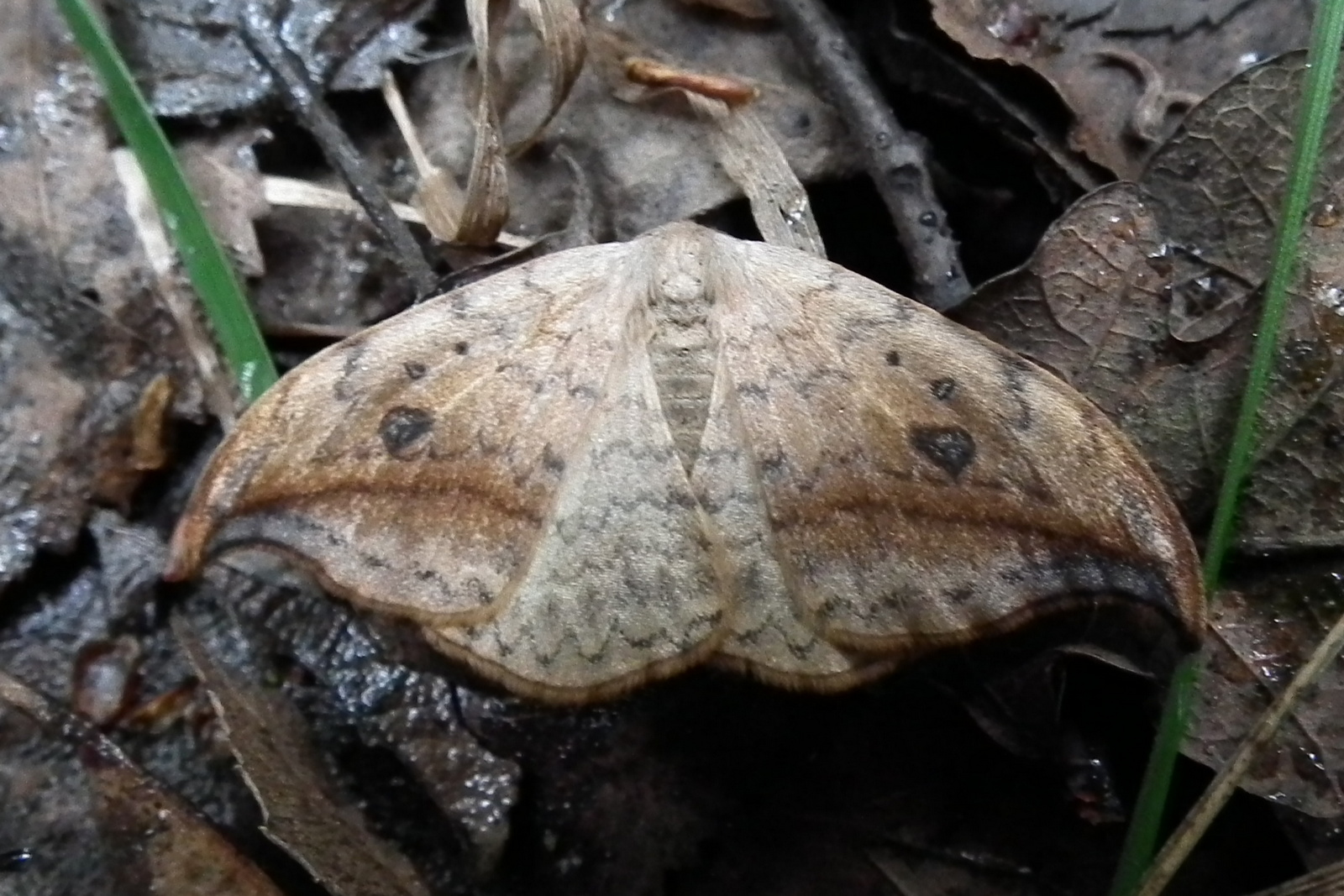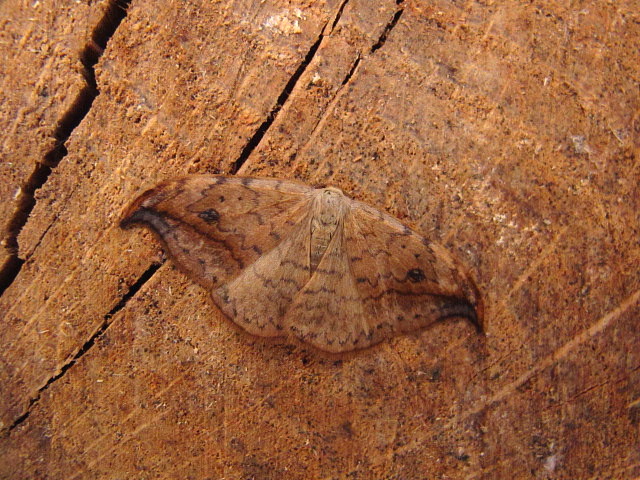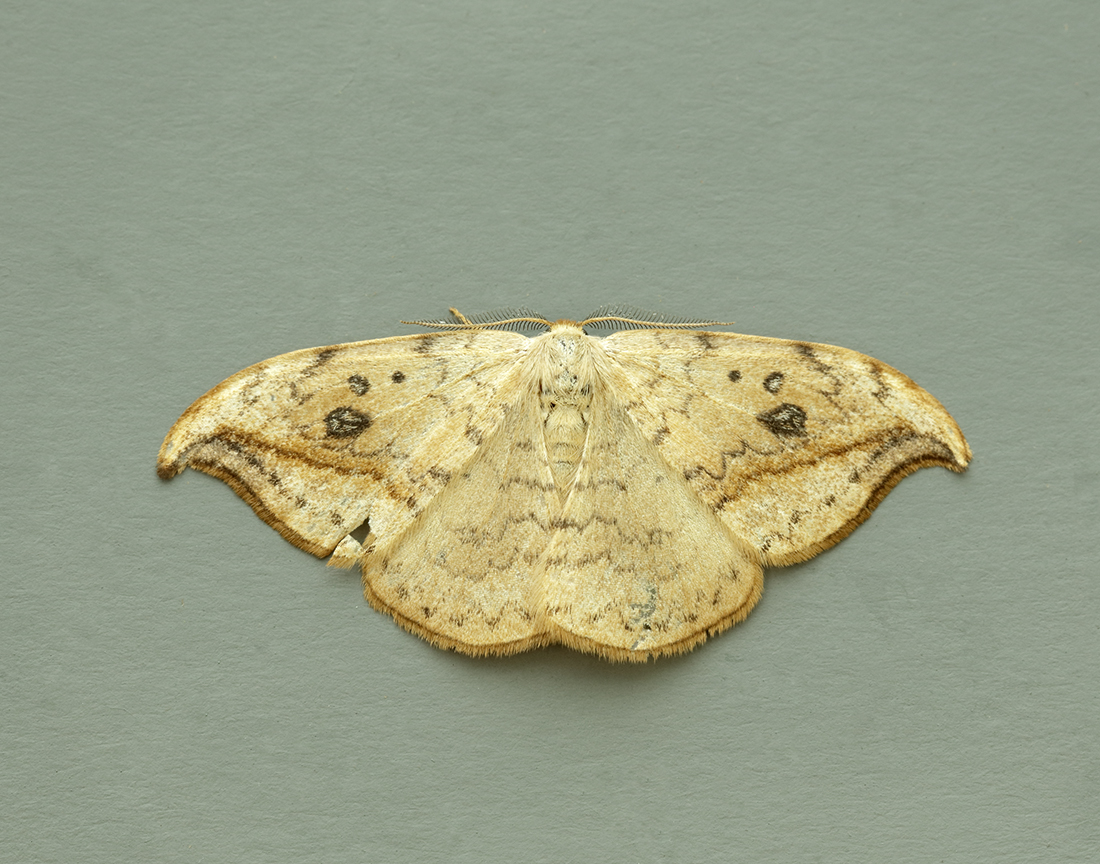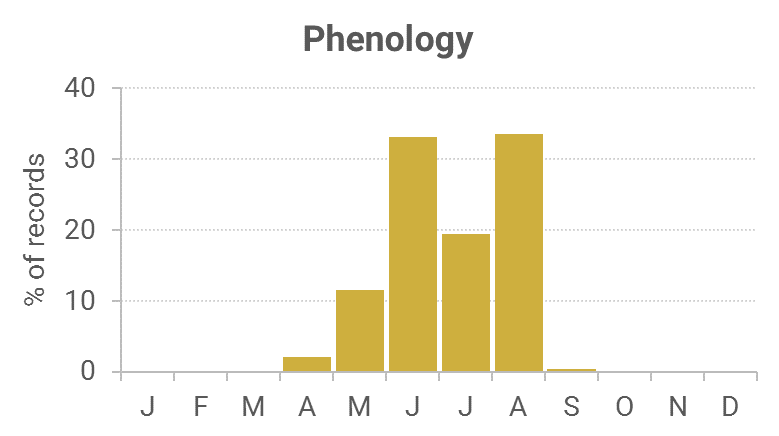Identification
The subspecies is probably falcataria in all records but this has only been confirmed once in VC73. Subspecies scotica occurs more at the northern end of Scotland. The Pebble Hook-tip has no proboscis, so it is never found at sugar or flowers.
Life cycle
Records range from mid-May to third week of August and it is very difficult to separate into two generations as there is no obvious break. Overwinters as a pupa, in a cocoon in the leaf-litter.
Larval foodplants
Silver Birch and Downy Birch.
Habitat
Woodland, scrub, heathland and other habitats with the larval foodplants of birches and Alder.
History
Gordon (1913) had found it to be rare, but the first for the region was taken on the high road at Corsemalzie on 11th June 1896. In early July 1905 he managed to beat one from Hazel, whilst in June 1911 he added it to his garden list. He found the specimens varied from light to very dark.
There were further records during the 1940s and 1950s, mainly Dumfriesshire (Sir Arthur Duncan) and one each from Mabie Forest and Kirkconnell Flow (VC73).
With the setting up of Rothamsted stations in the mid 1970s it was found to be common at most stations. Maitland Emmet & Heath (1992) recorded it across the region. This is our commonest Hook-tip with most records from VC73 and a handful from VC74.

